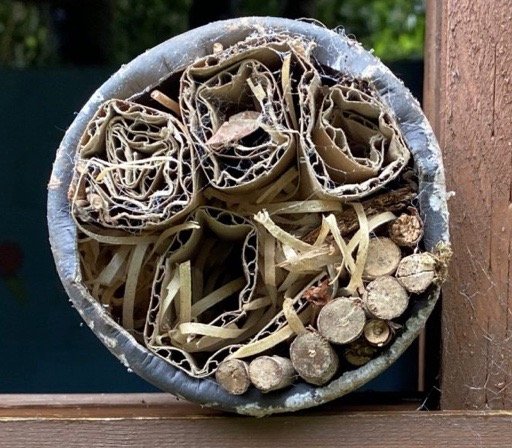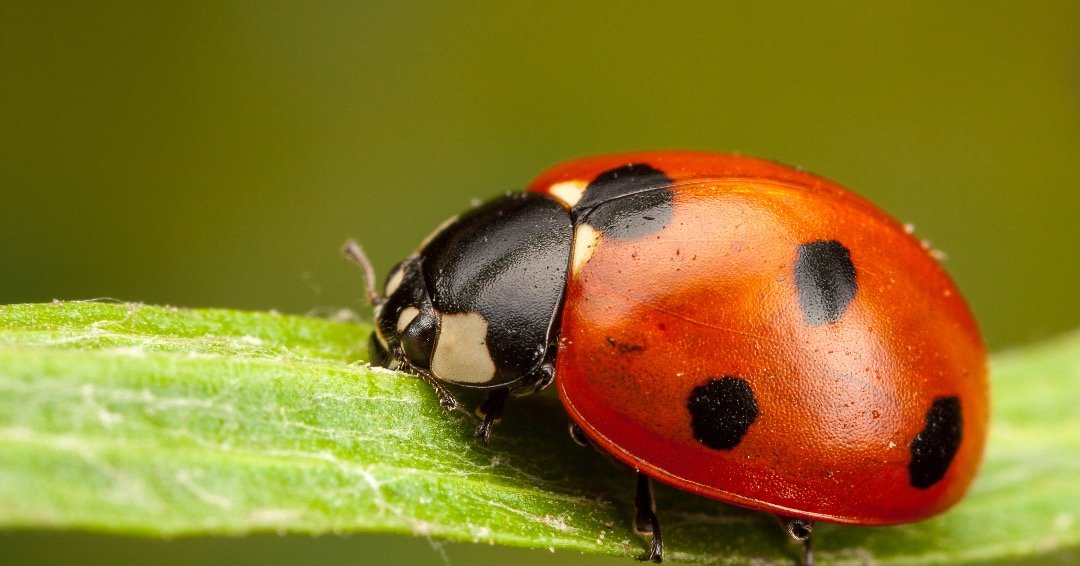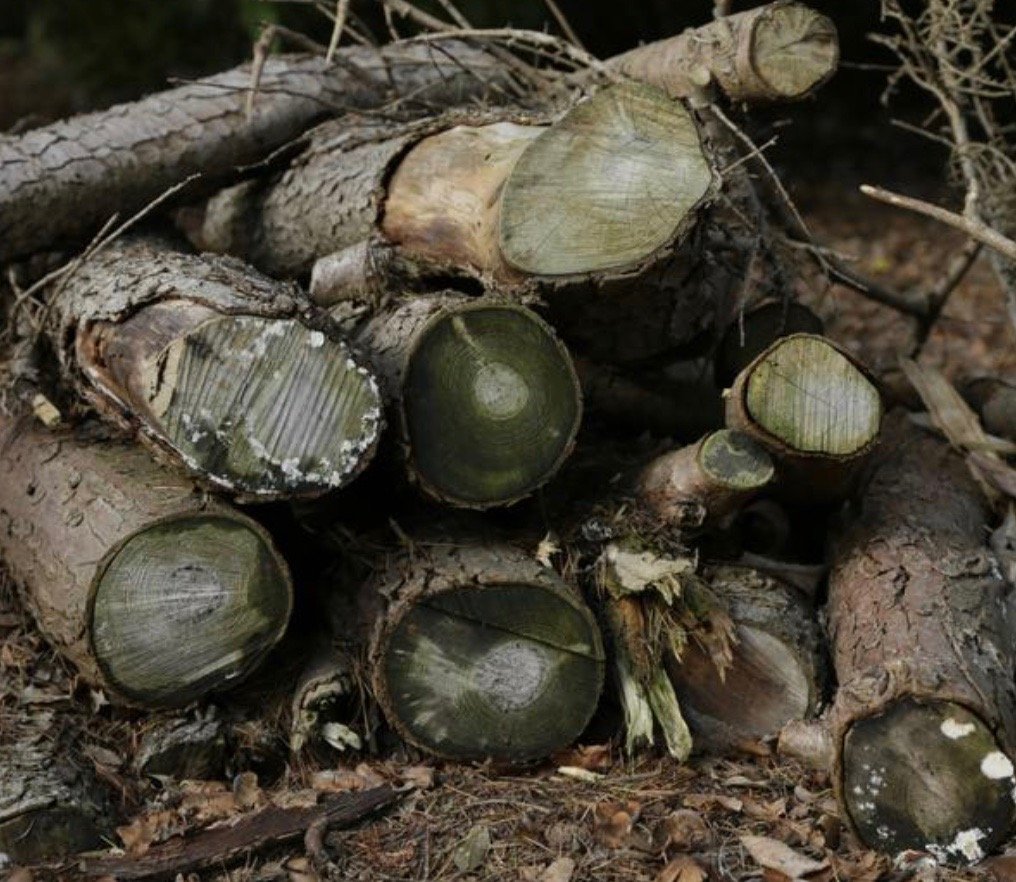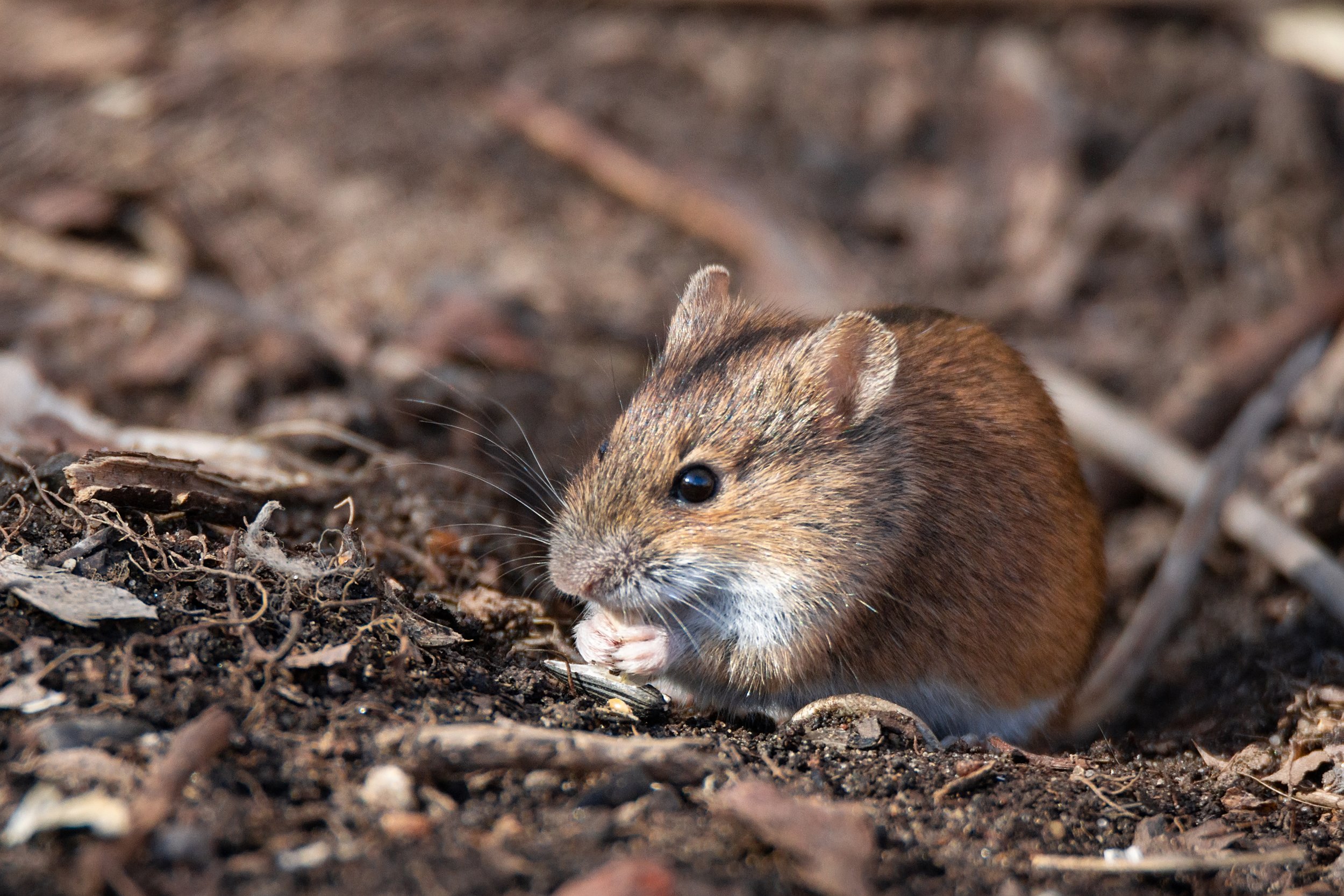Be insect friendly
Make a bug hotel or log pile in your garden
Insects and other invertebrate are very important to ours gardens ecosystem. They pollinate plants, keep soil fertile and are part of the food web providing food for animals further up the food chain, such as birds and hedgehogs. They need food, water and shelter. One way to provide shelter is to make a bee hotel or log pile in your garden.
Ideally place your bug hotel or log pile near to a water source and some wildflowers or other vegetation. The type of animal that will use your bug hotel or log pile will depend on its exact location due to the amount of sun or shade, shelter, damp or dry.
Bug Hotel
Place your bug hotel somewhere dry and sheltered, maybe in a hedge or shrub
Who might live in there?
Ladybirds
There are 26 species of ladybirds in UK. 7-spot ladybirds are common in our gardens. Ladybirds eat aphids and are great natural pest controllers for your garden plants and crops. Ladybirds spend winter in sheltered places and come out in Spring to mate. New adults emerge from their pupae in August. Ladybirds are eaten by birds as well as frogs, spiders and dragonflies.
Solitary Bees
There are about 250 species of solitary bees in the UK. Red mason bees are common in gardens, they eat pollen and nectar from flowers. They pollinate fruit trees and other garden plants. Seen from late March to June while fruit trees are in blossom. Bees are eaten by birds, spiders and mice.
Earwig
The Common European Earwig is the species most likely to be in your garden. Baby earwigs hatch in early Spring. Female earwigs are good mothers and care for their wiglets until they leave the nest. Earwigs eat aphids, other small insects and vegetation. Earwigs like to hide in dark crevices during the day.
“The power of a garden lies in its very smallest inhabitants. Gardeners who look after them will have the greatest positive impact for biodiversity.”
Log Pile
Place your log pile directly on soil on the ground. In a damp, shaded corner it will attract fungi, moss and creatures which like damp places. If it’s in the sun it might attract solitary bees.
Who might live in there?
Mice
There are 6 species of mice in the UK. Field Mice like to live in gardens. They eat seeds, snails, insects, fruit, berries, nuts and fungi. They can live up to a year in the wild. Mice are eaten by cats, owls and other birds of prey, foxes, badgers and stoats.
Frogs
There are 2 native species of frogs in the UK and 3 non-native. It is most likely to be a Common frog in your garden. Frogs spend most of their time on land. Frogs eat insects which they catch with their long sticky tongues. In Spring frogs need water to breed and lay frogspawn. A log pile is the ideal place for them to hibernate in Winter. Frogs are eaten by birds like crows and owls, also mammals such as hedgehogs and foxes (and cats).
Woodlice
There are around 40 species of woodlouse in the UK. It is most likely to be a Common rough woodlouse in your garden. Woodlice recycle nutrients by eating dead wood and rotting plant matter. They help make compost and vital to the gardens ecosystem. A woodlouse can live for 3-4 years and is eaten by toads, shrews and spiders.
For more ideas of how to provide habitats in your garden book a free garden consultation with Chalkhill Rewilding or sign up for my free newsletter. www.chalkhillrewilding.co.uk









